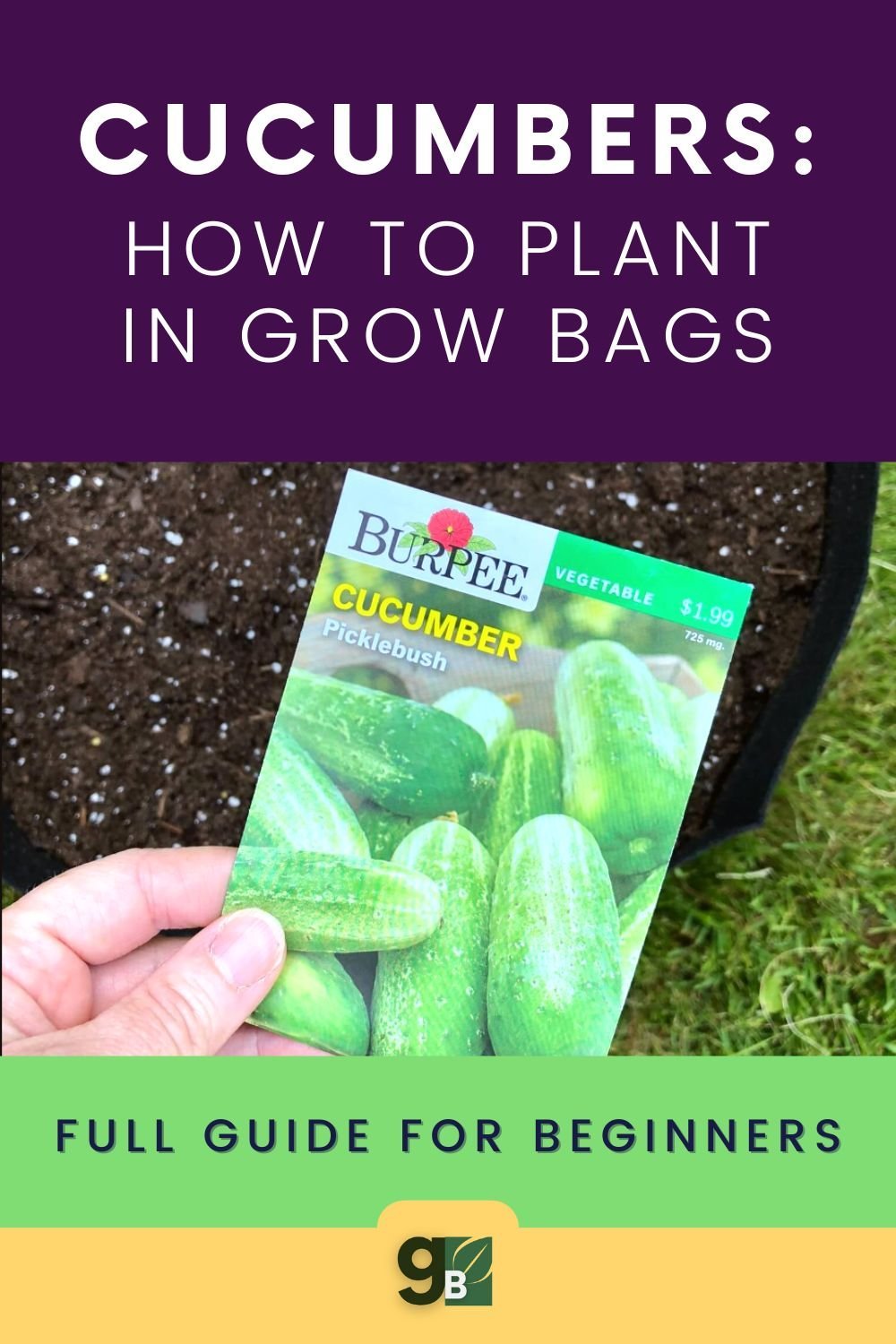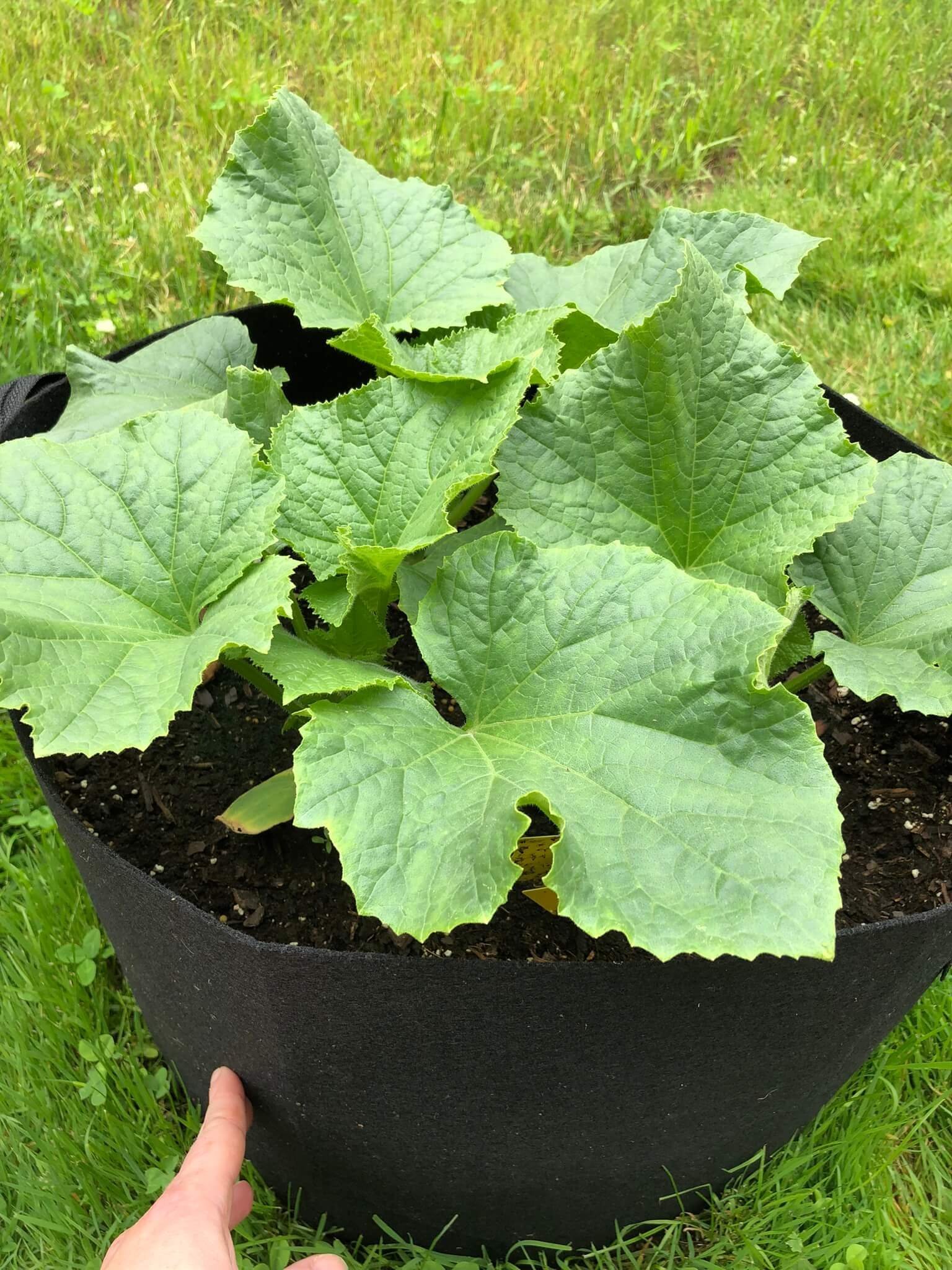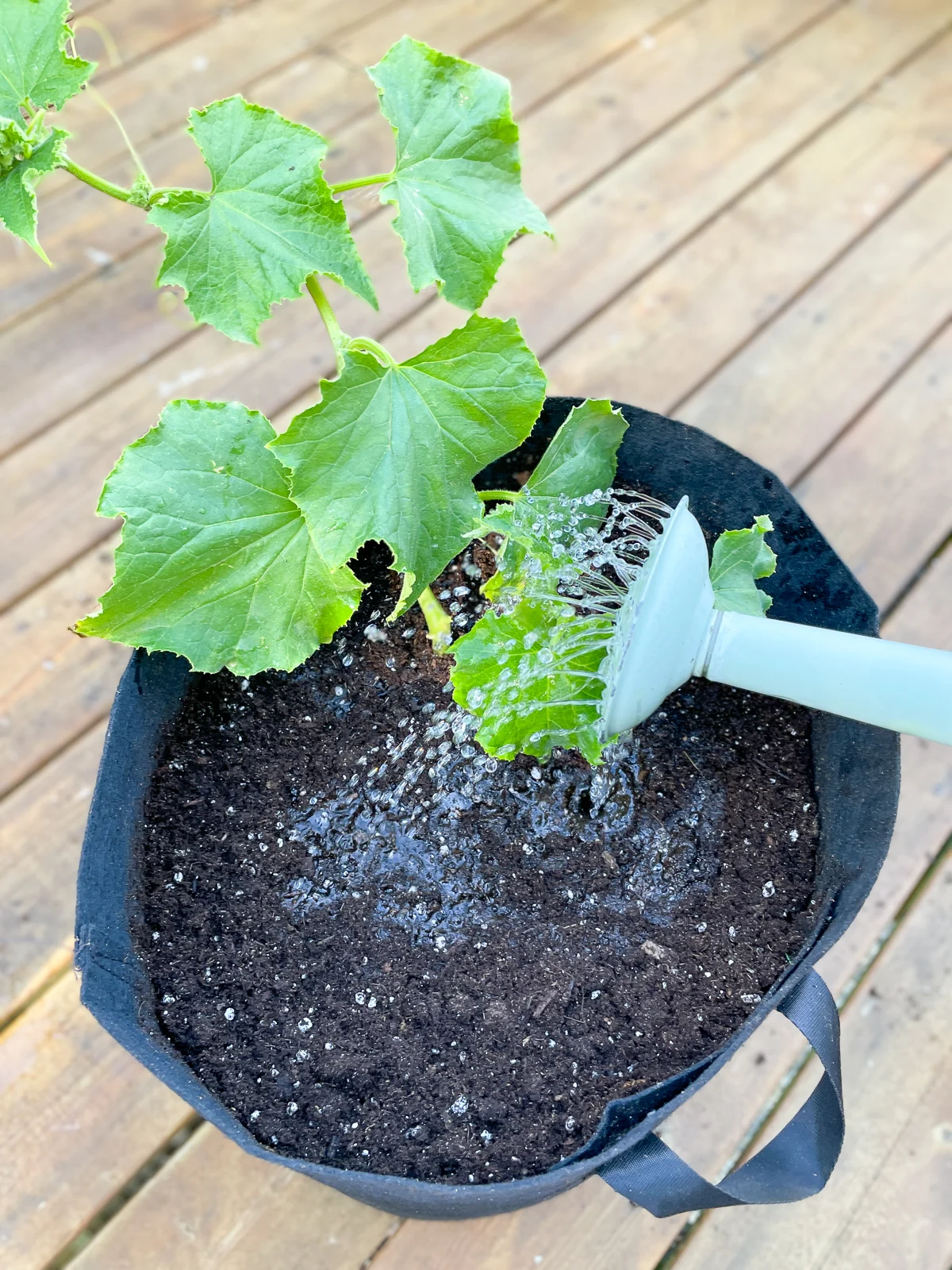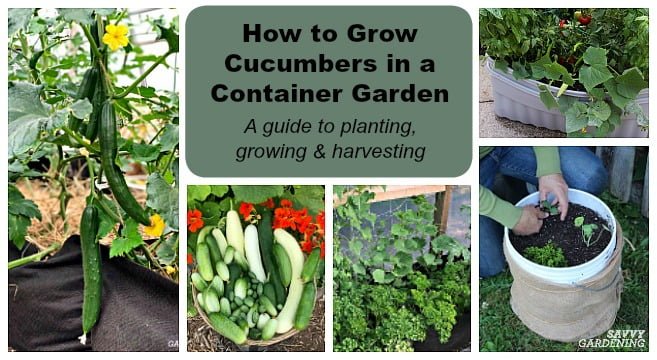Growing cucumbers in grow bags is an excellent way to maximize your garden space and enjoy a bountiful harvest. Whether you have a small balcony or a spacious backyard, this comprehensive guide will provide you with all the information you need to successfully grow cucumbers in grow bags. From choosing the right variety to caring for your plants and troubleshooting common issues, this article will walk you through each step of the process, ensuring that you have a successful cucumber growing adventure. So, grab your gardening tools and let’s get started!

A Comprehensive Guide to Growing Cucumbers in Grow Bags
If you’re interested in growing cucumbers, grow bags can be a fantastic option. They are versatile, easy to use, and allow you to have a bountiful cucumber harvest without the need for traditional garden beds. In this comprehensive guide, we will walk you through all the steps you need to take to successfully grow cucumbers in grow bags. From choosing the right grow bags to harvesting your cucumbers, we’ve got you covered.
Choosing the Right Grow Bags
Material
When choosing grow bags for your cucumber plants, it’s important to consider the material. The most common options are fabric and plastic grow bags. Fabric grow bags are breathable, allowing for better air circulation to the roots and preventing waterlogged soil. Plastic grow bags, on the other hand, retain moisture better and tend to hold up longer. Consider the needs of your cucumber plants and choose the material that best suits your growing conditions.
Size
Size matters when it comes to grow bags for cucumbers. The ideal size will depend on the specific cucumber variety you choose to grow. Generally, a 5-gallon grow bag is suitable for most cucumber plants. However, if you opt for a bush variety, a smaller grow bag may suffice. Keep in mind that cucumbers have extensive root systems, so a larger grow bag will provide more space for root development.
Drainage
Good drainage is crucial for the health and productivity of your cucumber plants. Ensure that the grow bags you choose have proper drainage holes at the bottom. These holes will allow excess water to drain out and prevent waterlogging, which can lead to root rot and other issues. Additionally, using grow bag saucers or elevating the bags on bricks will help prevent water accumulation and prevent potential damage to your plants.
Handles
While not a necessity, handles on your grow bags can make them easier to maneuver, especially if you plan on moving them around. Handles allow for convenient transportation and make it easier to adjust sunlight exposure when needed. If you anticipate needing to frequently relocate your cucumber plants, opting for grow bags with handles is worth considering.

Preparing the Grow Bags
Cleaning
Before filling your grow bags with potting mix, it’s important to clean them thoroughly. This will help prevent any potential diseases or pests from transferring onto your cucumber plants. Use a mild detergent and water solution to scrub the inside and outside of the grow bags. Rinse them well and allow them to air dry before proceeding.
Adding Drainage Holes
Although some grow bags already come with drainage holes, it’s a good practice to double-check and add more if necessary. Using a sharp knife or hole puncher, create several evenly spaced holes on the bottom of the grow bags. These holes should be large enough for excess water to drain out but not so big that the potting mix escapes.
Filling with Potting Mix
Now that your grow bags are clean and have adequate drainage, it’s time to fill them with potting mix. Choose a high-quality potting mix with good moisture retention and nutrient content. Fill the grow bags to within 2 inches of the top, leaving enough room for watering without overflow. Gently pat down the potting mix to eliminate air pockets and ensure even distribution.
Watering
Before planting your cucumber seeds or seedlings, thoroughly water the potting mix in the grow bags. This will help settle the soil and prepare it for planting. Ensure the water is evenly distributed throughout the grow bag, making sure not to oversaturate the soil. Wait for the excess water to drain out before proceeding with planting.
Selecting Cucumber Varieties
Determinate vs. Indeterminate
When choosing cucumber varieties, you’ll come across the terms determinate and indeterminate. Determinate cucumbers are compact in size and have a set growth pattern. They produce a more concentrated harvest over a shorter period. Indeterminate cucumbers, on the other hand, continue to grow and produce fruits throughout the season. Consider your available space and desired harvest schedule when deciding between the two types.
Bush vs. Vining
Cucumber varieties are also classified as bush or vining. Bush cucumbers have a more compact growth habit, making them suitable for smaller gardens or grow bags. They don’t require additional support and can thrive with limited space. Vining cucumbers, however, produce long, trailing vines that need trellising or support. These varieties are best suited for larger grow bags or gardens where they can spread out.
Disease Resistance
Another factor to consider when selecting cucumber varieties is disease resistance. Some varieties are bred to be resistant to specific diseases, such as powdery mildew or cucumber mosaic virus. Choosing disease-resistant varieties can help reduce the risk of your plants succumbing to common cucumber diseases, allowing for a healthier and more productive harvest.
Flavor and Use
Finally, consider the flavor profile and intended use of your cucumbers. Some varieties are known for their crisp texture and mild flavor, making them great for fresh salads or snacking. Others have a more pronounced flavor and are better suited for pickling or adding to sandwiches. Research the different cucumber varieties available and choose those that align with your tastes and culinary preferences.

Planting Cucumber Seeds
Germination
For successful cucumber seed germination, it’s important to choose high-quality, viable seeds. Cucumber seeds are usually viable for around 5 years if stored properly in a cool, dry place. To improve the germination rate, you can soak the cucumber seeds overnight in water before planting. This will soften the seed coat and encourage quicker and more consistent germination.
Indoor Starting vs. Direct Sowing
Cucumber seeds can be started indoors or directly sown in the grow bags, depending on the climate and growing conditions. Indoor starting allows for better control over temperature and can help jumpstart the growth process. Start the seeds in biodegradable pots filled with potting mix, keeping them in a warm and well-lit area. Once the seedlings have developed a few true leaves, they can be transplanted into the grow bags.
Direct sowing, on the other hand, can be done once the danger of frost has passed and the soil temperature has warmed up. Sow the cucumber seeds directly into the prepared grow bags, following the recommended seed spacing.
Seed Spacing and Depth
When planting cucumber seeds, it’s crucial to follow the recommended seed spacing. Each variety will have specific guidelines, but a general rule of thumb is to space the seeds around 6 inches apart. This allows enough room for the plants to grow and ensures adequate airflow between them. Plant the seeds at a depth of approximately 1 inch, covering them with soil and gently patting it down.
Moisture and Temperature
After planting the cucumber seeds, it’s important to keep the soil consistently moist until germination occurs. Avoid overwatering, as it can lead to rotting. One to two inches of water per week is usually sufficient for cucumber plants. Additionally, cucumbers thrive in warm temperatures, ideally between 70 to 90 degrees Fahrenheit. Providing the right moisture and temperature conditions will greatly improve seed germination and plant growth.
Transplanting Cucumber Seedlings into Grow Bags
Seedling Age and Size
When transplanting cucumber seedlings into grow bags, the age and size of the seedlings are crucial factors to consider. Seedlings should typically be around 3 to 4 weeks old and have a minimum of two true leaves before being transplanted. At this stage, the seedlings will have developed a robust root system and will be better equipped to handle the transplanting process.
Transplanting Process
To transplant cucumber seedlings, begin by gently loosening the soil around the seedlings in the pots or seed tray. Carefully lift the seedlings, taking care not to damage the roots. Create a hole in the potting mix of the grow bag, large enough to accommodate the roots. Place the seedling in the hole, ensuring that the soil level around the stem matches the level of the seedling in its previous container. Gently firm the soil around the seedling and water thoroughly.
Watering and Fertilizing
After transplanting the seedlings, it’s crucial to keep the potting mix consistently moist. Water the grow bags thoroughly, allowing excess water to drain out through the drainage holes. As the cucumber plants grow, monitor the moisture level and adjust watering accordingly. It’s also important to provide adequate nutrition to support the plants’ growth. Use a balanced organic fertilizer and follow the manufacturer’s instructions for application rates and frequency.

Caring for Cucumber Plants in Grow Bags
Watering
Consistent and adequate watering is paramount for the health and productivity of your cucumber plants. Cucumbers are heavy drinkers and thrive in moist soil, but they dislike waterlogged conditions. Monitor the moisture levels in the grow bags and aim to keep the soil consistently moist without causing waterlogging. A drip irrigation system or watering directly at the base of the plants can help ensure an even water distribution without wetting the foliage excessively.
Pruning and Training
Pruning and training your cucumber plants can help improve air circulation, prevent diseases, and maximize productivity. Regularly remove any yellowing or diseased leaves, as well as any side shoots or suckers that develop in the leaf axils. For vining cucumber varieties, consider training them vertically using a trellis, stakes, or a specialized cucumber support system. This will help save space and keep the plants organized for easier maintenance and harvesting.
Supporting Vining Varieties
As mentioned earlier, vining cucumber varieties require support to prevent the heavy vines from sprawling on the ground. Consider using trellises, tomato cages, or even string netting to provide the necessary support. When using a trellis or similar structure, gently tie the cucumber vines to the support using soft plant ties or twine. This will help prevent the vines from snapping or breaking under the weight of the cucumbers.
Fertilizing
In addition to the initial fertilizer application during transplanting, regular fertilization is necessary to support cucumber plant growth and productivity. Use a balanced organic fertilizer to provide essential nutrients. Sidedress the plants every 4 to 6 weeks, following the manufacturer’s recommendations. Avoid excessive use of nitrogen-rich fertilizers, as it can promote excessive vegetative growth at the expense of fruit development.
Pest and Disease Control
Like any other plant, cucumbers are susceptible to pests and diseases. Common cucumber pests include cucumber beetles and aphids, which can damage the leaves and transmit diseases. Regularly inspect your cucumber plants for signs of pests and implement control measures, such as using insecticidal soap or organic pest control methods. Additionally, cucumbers are prone to diseases like powdery mildew and downy mildew. Monitor your plants for any signs of disease and take prompt action if necessary, such as spraying with fungicides or using cultural practices to minimize disease spread.
Pollination for Cucumber Plants
Female and Male Flowers
Understanding the pollination process is important for the successful development of cucumbers. Cucumber plants produce separate male and female flowers. Male flowers have a slender stem and are responsible for producing pollen, while female flowers have a small swollen ovary at their base, which will develop into the cucumber fruit if pollination occurs.
Hand Pollination
In some cases, cucumber plants may struggle with pollination due to a lack of pollinators or unfavorable weather conditions. However, cucumber plants can also be easily hand-pollinated. To hand-pollinate cucumbers, simply transfer pollen from the male flowers to the stigma of the female flowers using a small paintbrush or cotton swab. Gently brush the stigma to ensure proper pollination and fruit set.
Attracting Pollinators
To encourage natural pollination, it’s beneficial to attract pollinators to your cucumber plants. Bees, butterflies, and other beneficial insects are excellent pollinators for cucumbers. Planting flowers nearby, such as marigolds or asters, can help attract these pollinators. Additionally, providing a water source, like a shallow dish filled with clean water, will also help attract pollinators to your garden.

Harvesting Cucumbers from Grow Bags
Identifying Mature Cucumbers
Knowing when to harvest your cucumbers is crucial for achieving the best flavor and texture. Cucumbers are usually ready for harvest when they reach their typical size and color for the specific variety. Most cucumbers are ready to harvest when they are around 6 to 8 inches long, with a uniform color. Avoid harvesting overly mature cucumbers, as they can be bitter and have tough skins.
Harvesting Techniques
To harvest cucumbers from grow bags, simply use a clean pair of scissors or pruning shears to cut the cucumber stem about 1/4 inch above the fruit. Avoid pulling or twisting the cucumbers, as this can damage the plant or adjacent fruits. After harvesting, gently wash the cucumbers with cool water to remove any dirt or debris. Store harvested cucumbers in the refrigerator to prolong their freshness.
Continual Harvesting
Cucumbers are known for their prolific production, and regular harvesting will help encourage the plants to continue producing. Check your cucumber plants daily during the peak growing season and harvest any ripe cucumbers promptly. This will prevent the cucumbers from becoming overripe and ensure a continuous harvest throughout the season.
Common Problems and Solutions
Yellowing Leaves
Yellowing leaves in cucumber plants can be a sign of various issues, including nutrient deficiencies, overwatering, or pests. Evaluate your watering practices and adjust if necessary, and ensure your plants are receiving adequate sunlight. Consider implementing a regular fertilization schedule using a balanced organic fertilizer. If pests are the culprit, take appropriate measures to control them.
Blossom End Rot
Blossom end rot is a common problem in cucumbers, characterized by a dark, sunken spot at the blossom end of the fruit. It’s caused by calcium deficiency in the developing fruit. To prevent blossom end rot, ensure consistent and even watering to avoid fluctuations in soil moisture. Additionally, adding calcium-rich amendments, such as crushed eggshells or powdered limestone, to the potting mix can help prevent this issue.
Cucumber Beetles
Cucumber beetles are a common pest that can cause significant damage to cucumber plants. These beetles feed on the leaves, stems, and flowers of the plants, and they can also transmit bacterial wilt disease. Remove any affected leaves or flowers and use row covers to protect young plants from infestation. Consider using organic insecticides specifically formulated to control cucumber beetles if the infestation is severe.
Powdery Mildew
Powdery mildew is a fungal disease that commonly affects cucumber plants. It appears as a white powdery coating on the leaves, stems, and fruits. To prevent powdery mildew, provide adequate air circulation by pruning and training your cucumber plants. Water the plants at the base to avoid wetting the foliage excessively. If powdery mildew develops, apply fungicides or use organic remedies such as neem oil or a mixture of baking soda and water to help control its spread.
Best Companion Plants for Cucumbers in Grow Bags
Herbs
Planting compatible herbs alongside your cucumber plants can benefit both crops. Herbs like dill, cilantro, and basil can attract beneficial insects, such as ladybugs and parasitic wasps, which prey on common cucumber pests. Additionally, the strong aroma of certain herbs can help deter pests and mask the scent of the cucumbers, reducing the risk of infestations.
Flowers
Flowering plants also make excellent companions for cucumbers in grow bags. Marigolds, nasturtiums, and calendula not only add beauty to your garden but also attract beneficial insects. Their vibrant colors and enticing smells help lure pollinators and natural predators to your cucumber plants, promoting overall garden health.
Vegetables
Certain vegetables can enhance the growth and productivity of your cucumber plants when grown together. Lettuce, radishes, and beans are great choices for companion planting with cucumbers. Lettuce and radishes help provide shade and keep the soil cool for the cucumber plants. Beans, on the other hand, have nitrogen-fixing properties that can benefit the cucumbers, improving overall growth and productivity.
By following this comprehensive guide, you’ll be well-equipped to successfully grow cucumbers in grow bags. From selecting the right grow bags and caring for your cucumber plants to harvesting your bountiful crop, each step is crucial for a rewarding and abundant cucumber harvest. Enjoy the satisfaction of growing your own cucumbers and savor the delicious flavors they bring to your meals. Happy growing!



